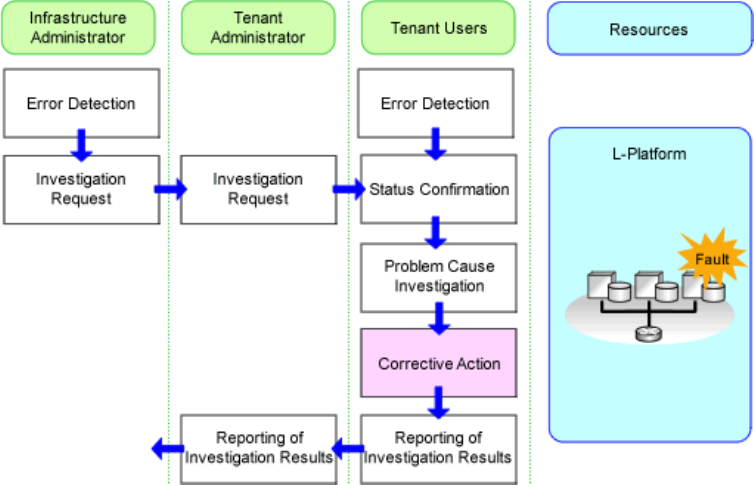
Flow of Corrective Actions when Hardware Fails
The flow of corrective actions when hardware fails is as below.
Figure 9.2 Flow of Corrective Actions when Hardware on which an L-Platform Operates Fails
1. Error Detection
Errors are detected at the following timing:
- When operation errors are reported to the tenant user by the user of the application running on the L-Platform
- When hardware errors are detected by the infrastructure administrator or the infrastructure monitor
- When the status of L-Platform resources used on the ROR console change to something other than "normal"
2. Investigation Request
The tenant user requests investigation of the cause of the error by the tenant administrator, based on the information related to
detected errors (error details, the name of the resource where the error occurred, the L-Platform name).
The tenant administrator requests investigation of the cause of the error by the infrastructure administrator, based on the information
obtained from the tenant user.
3. Status Confirmation
The infrastructure administrator identifies the hardware to which resources are allocated using the obtained information, and
confirms their status.
4. Problem Cause Investigation
The infrastructure administrator identifies the cause, by investigating the hardware on which the problem occurred.
5. Corrective Action
The infrastructure administrator takes corrective actions in order to resolve the problems with hardware.
6. Reporting of Investigation Results
The infrastructure administrator reports the results of the investigation, after completing corrective action.
Flow of Hardware Maintenance when a Server Fails
The following flowchart shows the procedure for maintaining hardware when failures occur on registered servers.
- 45 -


















